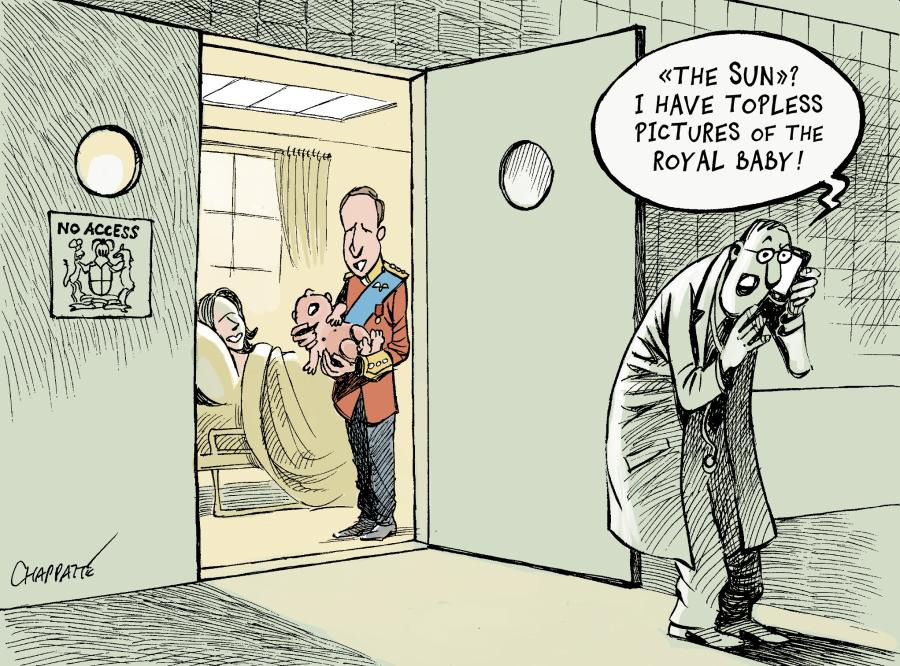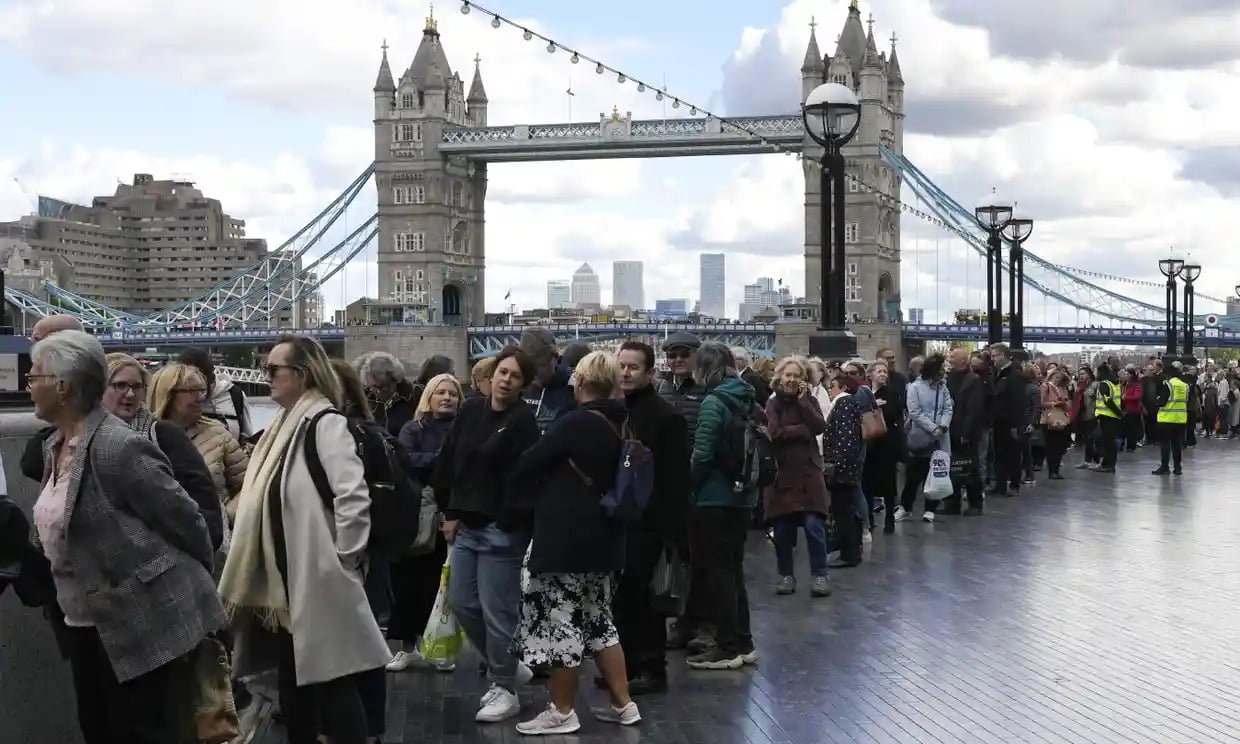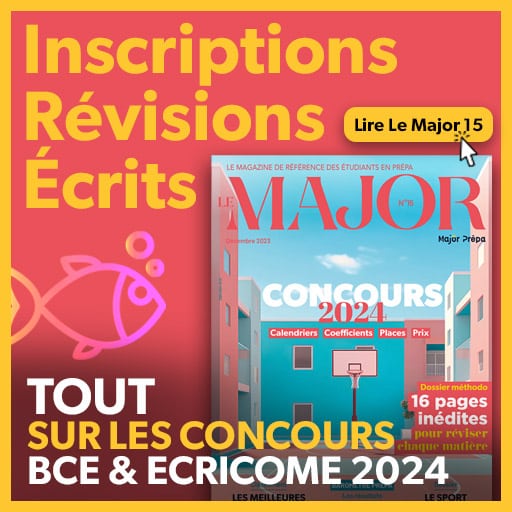Major Prépa > Concours > Comprendre la nouvelle épreuve de langues et ses attentes : le résumé analytique comparatif

La nouvelle épreuve de langues aux concours chamboule aussi bien les enseignants que les candidats. Cet article t’explique les attentes des correcteurs et la méthodologie à suivre. Cela te permettra d’obtenir une bonne note à la sous-épreuve de résumé analytique comparatif.
Au lycée, les séries S, L et ES ont été abolies au profit des spécialités. Ce qui a entraîné la fusion des prépas ECS et ECE en ECG. Suite à ces modifications, la BCE a amorcé des discussions concernant une éventuelle réforme des concours. Cela a fait controverse au sein du professorat, la version disparaissant notamment de l’épreuve de langues. En outre, un nouveau type d’exercice fait son apparition : le résumé analytique comparatif. Les sujets 0 ont d’ores et déjà été communiqués par la BCE. Après analyse de ces sujets, Major-Prépa te donne toutes les clés pour réussir cette nouvelle sous-épreuve avec brio !
Qu’est-ce qu’un résumé analytique comparatif ?
Analyse de l’intitulé de l’épreuve
L’intitulé de l’épreuve, composé de trois mots aux apparences très techniques, en effraie plus d’un. Il donne un aspect presque encyclopédique à l’épreuve. Néanmoins, pas de panique : il faut procéder par étapes pour comprendre ce que signifie chacun de ces mots.
1) Le mot « résumé » est certainement le terme le plus simple à comprendre. Il signifie que tu vas devoir faire appel à la fois à tes capacités de compréhension des documents en langue étrangère, mais également à tes compétences de synthèse. Il ne s’agit donc pas seulement d’être capable de restituer le contenu des documents, mais de savoir thématiser et conceptualiser afin de fournir un vrai « résumé » !
2) Le mot « analytique » signifie qu’il ne suffira pas de paraphraser les documents. Il faudra les analyser. C’est-à-dire éclaircir certains points et construire une argumentation à partir des informations fournies. Dès lors, le travail que tu produiras devra avoir une dimension démonstrative.
3) Le mot « comparatif » est, en réalité, la seule nouveauté de ce format d’épreuve. En effet, auparavant, la question de compréhension visait à évaluer tes capacités de « résumé ». Tandis que la question d’expression écrite avait pour objectif d’évaluer tes compétences « analytiques ». La dimension comparative du résumé analytique comparatif requiert que tu crées des liens entre les documents et que tu les mettes en regard. Interdit, donc, de n’argumenter que sur un seul document !
Le résumé est-il une synthèse de documents ?
Sur la toile comme dans les prépas, on entend souvent le terme « synthèse de documents » comme substitut au vrai intitulé de l’épreuve. Mais qu’en est-il ?
Une synthèse de documents ressemble a priori à ce qui est attendu pour l’épreuve de résumé analytique comparatif. Néanmoins, les concepteurs ont choisi d’intituler cette épreuve « résumé analytique comparatif » pour donner autant d’importance aux trois compétences à maîtriser pour réussir l’épreuve. Nommément, le résumé, l’analyse et la comparaison. Le terme « synthèse » étant relativement vague, je te déconseille fortement de te mettre en tête que c’est ce qui est attendu de toi. Le risque est de tomber dans la paraphrase en oubliant les parties analytiques et comparatives de l’épreuve !
Quels types de documents auras-tu à analyser ?
Tu devras résumer, analyser et comparer divers documents, dont un en français d’environ 400 mots. Il peut s’agir d’articles de presse ou d’extraits d’essais ou de monographies. Il y a également des documents iconographiques (comme des photographies ou des dessins de presse, par exemple). Il te sera donc nécessaire de bien maîtriser le vocabulaire de la description d’images pour réussir à exploiter les documents iconographiques.
Voici quelques mots qui peuvent t’être utiles :
In the foreground : au premier plan
In the background : à l’arrière-plan
At the top : en haut
At the bottom : en bas
On the left : à gauche
On the right : à droite
In the bottom right corner : dans le coin inférieur droit
Quelles informations doivent figurer dans un résumé analytique comparatif ?
Le résumé analytique comparatif ne requiert pas que tu exprimes ton opinion personnelle. Au contraire, il est attendu que tu rendes le contenu du dossier de documents en le thématisant. Tu dois utiliser uniquement les informations et points de vue présents dans le dossier.
Enfin, attention à la question de résumé analytique comparatif. Focalise-toi sur les documents mentionnés dans la question, sinon tu risques de faire du hors sujet. Tu as néanmoins le droit de mentionner rapidement les autres documents, si c’est pertinent.
Quelle est la structure d’un résumé analytique comparatif ?
Le résumé analytique comparatif fait environ 350 mots en LV1. Je te conseille de traiter tous les documents à résumer en même temps. Il vaut en effet mieux éviter de faire un paragraphe par document, sinon, tu ne remplis pas la partie « comparaison » de l’exercice.
Tu peux donc commencer par une phrase introductive qui présente le thème commun aux documents (80 mots environ). N’oublie pas de contextualiser les documents et d’analyser leur nature (20 mots environ), la mise en regard des documents commence dès cette étape de contextualisation !
Tu peux ensuite développer sur les similitudes entre les documents en ce qui concerne ce thème (100 mots environ). Puis, tu peux relever les diverses contradictions entre les documents (100 mots environ). Tu peux terminer par une phrase conclusive (50 mots environ).
Quelles sont les attentes des correcteurs dans ton résumé ?
Le soin apporté à la langue
Les concepteurs mettent un point d’honneur à valoriser une langue riche et bien construite. Dans leurs « notes réservées aux enseignants » qui accompagnent le sujet zéro d’anglais, ils écrivent : « The candidate should display a wide range of grammatical structures, including some complex sentences and idiomatic vocabulary in the appropriate style and register, as well as rich lexis and sophisticated phrasing. »
N’hésite pas à consulter nos articles de grammaire et de vocabulaire pour progresser à l’écrit.
La compréhension des documents
La première compétence qui est évaluée est la compréhension des documents. Il faut donc faire attention à la manière dont tu interprètes les points de vue du ou des auteurs. Il peut être intéressant d’identifier dès le début de ta réponse le ton des documents (cf. sujet et corrigé à la fin de cet article).
En outre, il faut éviter la paraphrase et reformuler le contenu des documents avec tes propres mots. Ceci afin de montrer au correcteur qu’en effet, tu as bien compris les idées principales des documents.
L’identification d’un thème commun aux documents
Il serait souhaitable que tu identifies un thème commun (ou deux) aux documents, afin de pouvoir les comparer en ayant ce thème à l’esprit. Cela t’aidera dans ta rédaction, car ce thème sera ton fil conducteur. Cela te permettra également de montrer à ton correcteur que tu respectes la consigne visant à « comparer » les documents !
La mise en relation des documents
Si le thème commun aux documents n’est pas une nécessité, leur mise en relation l’est. N’hésite pas à réviser les connecteurs logiques et autres mots qui te permettent d’exprimer un contraste afin d’avoir les outils nécessaires pour confronter les documents. Tu peux également souligner leurs points communs et autres similitudes.
Une progression de pensée convaincante
350 mots, c’est court. Il faut donc que ton propos soit parfaitement organisé et s’enchaîne de manière logique. Dès lors, évite l’effet « énumération » en rédigeant des transitions entre tes idées.
Comment faire la différence à l’épreuve de résumé analytique comparatif ?
Ton esprit de synthèse est ton meilleur allié à l’épreuve de résumé analytique comparatif. Plus tu arriveras à ramasser tes idées en concepts et notions, plus tu disposeras de mots pour donner un maximum d’informations dans ton texte.
C’est donc avant tout la clarté et l’efficacité de ton résumé analytique comparatif qui te permettront de faire la différence. Bien sûr, il n’est pas non plus exclu que ton correcteur valorise également certaines bonnes tournures ou le repérage d’un thème commun qui n’était pas évident !
Quels sont les écueils à éviter dans ton résumé ?
Les erreurs de grammaire
Attention aux erreurs de grammaire classiques qui peuvent fortement te pénaliser. Oubli du « -s » de troisième personne, mauvaise conjugaison d’un verbe irrégulier, ou encore faute de temps…
Si tu as des difficultés à évacuer les fautes de tes copies, n’hésite pas à consulter nos articles de grammaire pour y voir plus clair !
Un vocabulaire qui n’est pas assez varié
Les concepteurs ne cessent de le souligner : il est attendu que les candidats utilisent un vocabulaire varié. Quand tu rédiges, pense aux synonymes. Et lors de la relecture, vérifie donc bien qu’il n’y a aucune répétition dans ta copie.
Tu peux consulter notre méthode pour éviter les répétitions en anglais si c’est un point que tu souhaites travailler ! Et si tu veux acquérir du vocabulaire original pour bluffer ton correcteur, c’est par ici !
Le manque d’analyse des documents
Le résumé analytique comparatif suppose un minimum d’analyse. Il n’y a pas que le contenu des documents qui est intéressant ! Dès lors, pense à bien regarder le paratexte et à comparer les dates de publication (même période ?), les auteurs (même parti politique ?), etc. Le paratexte est une source d’analyse inépuisable ! Si tu compares ces éléments-là, tu entres directement dans l’analyse.
Concernant le corps des documents, il faut à nouveau commencer par conceptualiser les grandes idées des textes ou des images pour réussir à les comparer, à les nuancer. Et donc à les analyser.
Le manque de mise en relation et de comparaison des documents
Comme pour l’analyse, la comparaison fait partie intégrante de l’épreuve. Comme il s’agit d’une nouveauté, grand nombre d’étudiants vont négliger ce point. Ils vont ainsi perdre de précieux points, car ils n’auront pas assez mis les documents en regard.
À l’inverse, si tu parviens à les contraster ou à mettre leurs similitudes en relief, tu gagneras des points !
L’absence de progression de pensée identifiable
Il faut absolument être clair pour ton lecteur. Un propos confus ou qui ne s’enchaîne pas de manière logique peut te faire perdre de nombreux points. Cela même si tes idées de résumé, d’analyse ou de comparaison sont brillantes. Ainsi, la forme et la structure de ton travail sont aussi importantes que le fond et que les exemples que tu développes.
Sujet d’entraînement
Compréhension : résumé analytique comparatif
Le candidat répond en anglais à la question posée en 350 mots, plus ou moins 10 %, en identifiant et en comparant les informations pertinentes dans les documents du dossier. Sans commentaire personnel ni paraphrase.
1 – According to documents 1 and 2 in the dossier, what are the pros and cons of monarchy? Reference to any other documents may be included if relevant. Answer the question in your own words (350 words).
Document 1
“What the British Monarchy Actually Does—And How Hard It Would Be To Abolish It”
If the outpour of grief—or public polling—in the aftermath of Queen Elizabeth II’s death is anything to go by, it is clear that Britain is still largely a nation of royalists. But as anti-monarchy sentiment attracts more attention, and as some protesters even get arrested for voicing such views, it’s worth revisiting what role the monarchy plays in Britain’s constitutional system and just how complicated it would be to abolish the institution.
Contrary to conventional wisdom, the power to abolish the monarchy doesn’t lie with the monarch alone. In fact, there isn’t a whole lot that British Kings and Queens can actually do beyond the bounds of their constitutionally-defined mandate—one that primarily involves tasks such as appointing prime ministers, approving new laws, receiving foreign dignitaries, and presiding over the opening and dissolving of parliament. Over the course of Queen Elizabeth II’s 70-year reign, she would have likely held thousands of meetings with the 15 prime ministers she worked with, appointed hundreds of ministers, and given her ascent to an untold number of laws, all while having virtually zero say in who those ministers were or what their legislative agenda ought to have been. As the English poet Tennyson once noted, Britain is a crowned republic—one in which the monarch reigns, but does not rule. The Queen acknowledged these limits in her first televised address to the country in 1957. “I do not give you laws or administer justice. But I can do something else. I can give you my heart and my devotion to these old islands and to all the peoples of our brotherhood of nations,” she said.
While the lack of political power doesn’t overshadow the Royal Family’s enormous privilege—especially when it comes to its vast wealth and financial arrangements—it does help explain how such a seemingly outdated institution has persisted for so long. While the pomp, tradition, and sense of history undoubtedly play a part in the monarchy’s continued appeal, so too does the fact that the monarch is seen as an apolitical figure whose entire existence is devoted to service, and therefore above the compromises inherent to electoral politics. Constitutionally-speaking, “the monarch, in almost everything they do, has no choice,” says Robert Hazell, a professor of government and the constitution at University College London. In the case of Queen Elizabeth II, this was perhaps best illustrated by the many times in which she had to play host to authoritarian leaders such as Russia’s Vladimir Putin, Zimbabwe’s Robert Mugabe, and Romania’s Nicolae Ceaușescu. Such was the Queen’s lack of autonomy that, as one story goes, she once resorted to hiding in a bush in the Buckingham Palace gardens in order to avoid having another conversation with Ceaușescu, who at the time was her houseguest.
If Britain ever did decide to get rid of the monarchy, it would be a constitutional matter requiring legislation from parliament. Even before that, it would need to be endorsed by the British public through a referendum, which would have to be called for by the government (just as the Brexit referendum was). If such a vote were held today, polling from June suggests that the country would opt to keep the monarchy by a significant margin. And Britain wouldn’t be alone in doing so. Although previous referendums have led to the abolition of the monarchy in Italy and Greece, they have also reaffirmed support for the institution in Belgium, Denmark, Luxembourg, Norway, and Spain.
Getting rid of the monarchy, or simply rescinding it of its ceremonial duties, would constitute “a huge change,” says Hazell, in large part because it would require a complete shakeup of the way the British state is governed. Unlike in the U.S., where the elected President acts as both the country’s head of state and its head of government, Britain’s parliamentary system splits those responsibilities between the monarch, whose role as head of state is inherited at birth, and the Prime Minister, whose role as head of government is decided by the British public (or, in the case of the current occupant of 10 Downing Street, a select group of Conservative Party members).
With the monarch gone, Britain would need a new head of state, as is required in almost all parliamentary systems. This would most likely be in the form of a President, a role that already exists in parliamentary systems such as Germany and Italy. This person would have most of the existing responsibilities of the monarch, such as certifying laws, going on state visits, and speaking to the nation in times of national crisis. But an elected head of state would also likely have the responsibility of acting as “a kind of constitutional umpire,” says Hazell—something that a monarch could never be.
Republicanism isn’t a strong force in Britain at the moment, which makes the abolition of the monarchy unlikely for the foreseeable future. But that could change if the institution does, or if it fails to attract the support of the younger British population. Among those aged 18 to 24, support for the monarchy has fallen from 59% in 2011 to just 33% today.
Yasmeen Serhan, Time, September 15, 2022
Source : Time
Document 2
“The Guardian view on monarchy as religion: parliament should not bend the knee”
The departure of one monarch and the arrival of another raises the question of what Britain has lost in the transition. The death of the Queen feels to some like the loss not of bearings but of the nation’s compass itself. Monarchy is a form of religion. In a secular age, it is easier to disavow God than the monarchy. Plainly much of the country is grief-stricken, though the proportion who were unmoved or critical is unknown. But the advent of King Charles III brings about a sense of change – and foreboding.
Even among the more detached, touched by unsuspected sorrow, the new sovereign will gain support. But the new King is not as popular with the public as his mother. That is a problem for Charles III and the institution he heads because in a democracy, monarchies depend on public consent. One only has to look at Prince Andrew. The King’s younger brother’s ill-fated BBC Newsnight interview – in which he defended his association with the convicted sex offender Jeffrey Epstein – saw his approval ratings sink to 7%. Walking behind his mother’s coffin on Monday is a rare public outing for a prince who was once second in line to the throne.
Modern societies expect their institutions to change and keep in step with the values and aspirations of the public. The great success of Elizabeth II as monarch was to keep her considerable exercise of soft power out of the public view so that it is not threatened by scrutiny. The sovereign’s power rests on the fact that monarchical consent must be obtained in advance before the introduction of any bill that interferes with the prerogative powers of the crown and effects on the crown’s private interests. King Charles, like his mother, will have the ability to exercise influence before final decisions are made. Both these aspects of consent should be abandoned.
There should be a wider consideration of royal reform by parliament. While the late Queen volunteered to pay some income tax in the 1990s, her son did not pay inheritance tax – and the £650m private estate of the Duchy of Lancaster passed to King Charles untaxed. That deal needs to be reviewed. The royal finances are obscured by what is private and public property. A quarter of the profits from the crown estate are given to the reigning monarch in the form of a grant. Last year this was worth about £85m. But the bill for royal security is picked up by the state – bringing the annual cost of the monarchy to £350m. For all the protestations of moth-eaten palaces, the cost of living crisis has yet to make headlines in the royal household.
A divided Britain, in which the late Queen was a glue, cannot disregard the consequences of her departure. Brexit opened up constitutional fissures – notably when the supreme court ruled unlawful parliament’s prorogation in the name of the crown. The powergrab by Boris Johnson to assume the royal prerogative to dissolve parliament remains contested by constitutional experts.
Who is the head of state does matter. Birthright is not the right way to choose one. Parliament is the place to decide whether Britain needs a slimmed down monarchy – or one at all. There is an appeal to a sovereign standing above the fray in an age of political populism. But MPs should not bend the knee before inheritance and rank. Modern Britain has little need for trappings and privileges that belong to another age.
Editorial, The Guardian, September 12, 2022.
Source : The Guardian
Document 3
Heureusement, il n’y a plus de monarchie en France
Je ne cesserai jamais de féliciter mes ancêtres qui ont, après une révolution salutaire, déboulonné la royauté en France. Quand on voit comment l’institution a évolué en Grande-Bretagne, on ne peut que se réjouir d’être sans famille régnante.
Les scénaristes ont beau essayer de transformer ces mesquineries, coups bas et autres manigances en scénario de série à succès (The Crown, sur Netflix), le spectacle dans la vraie vie reste assez rebutant pour ne pas dire abject.
Dernier rebondissement en date (celui qui servira sans doute de départ à la saison 10), l’interview vérité de Meghan Markle et son chéri, fils de Diana, petit-fils de la Reine Elizabeth. La comédienne américaine n’y va pas de main morte, osant mettre sur la place publique les réflexions racistes d’éminents membres de la royauté.
Bon, rien d’étonnant pour les fans de la série. On sait qu’à une époque non seulement il y avait des racistes à Buckingham mais qu’en plus ils étaient fascinés par le fascisme…
Alors forcément, un bébé caramel dans la famille pot de lait provoque des débuts d’étouffement chez certains de leurs descendants. Sur le fond, il n’y a pas photo et le jeune couple domino ne peut qu’attirer toutes les sympathies.
Par contre, sur la forme, Meghan et Harry n’arriveront jamais à justifier le pactole touché pour cette interview. Pour ces millions de dollars, en France à une certaine époque, et quelle que soit la couleur de votre peau, vous vous seriez retrouvé sur l’échafaud.
Une solution expéditive mais qui nous épargne, aujourd’hui, de consacrer des heures de débat sur les bisbilles d’une seule famille alors que des millions d’enfants meurent de faim dans le monde et que chez nous les services de santé sont débordés par la pandémie.
Michel Litout, L’Indépendant, 12 mars 2021.
Source : L’Indépendant
Document 4

Patrick Chappatte, British Royal Baby, July 21, 2013.
Source : Chappatte
Document 5

The Great Queue, The Guardian, September 18, 2022.
Source : The Guardian
Proposition de corrigé
The recent death of Queen Elizabeth triggered mediatic interest in the necessity of a monarchy in the United Kingdom as illustrated by documents 1 and 2, press articles that were both published in September 2022, right after the death of the monarch. Yet, if the journalist’s opinion remains rather neutral in document 1, the columnist who wrote document 2 had more biased ideas as he suggests a monarchy should either be reformed or disappear. This contrast in viewpoints exemplifies the existing diverging opinions regarding the possible establishment of a republic in the United Kingdom, an ideological dichotomy fueled by the various pros and cons mentioned in the dossier.
Document 1 explains that British people still tend to support the monarchy, an argument reinforced by document 5, a photograph of the long queue of people who waited to see the Queen after her death. However, Yasmeen Serhan seems to be conscious of the growing anti-monarchic feeling that is invading Britain: the youth are rather apt to advocate for a republic as document 2 shows. Indeed, if the monarch brings about a sense of unity in the country (as a matter of fact, document 4 represents a gathering, or a united people), divisions are also conveyed by the various scandals the Royal Family is associated with. For instance, if document 2 evokes the financial wrongdoings of the royals, document 3 also reveals that mediatic scandals tarnish the image of monarchy.
If the media focuses on the Royal Family, it is less to show the institutional facet of the monarchy than to use this national symbol as a way to produce sensational news as depicted in document 4, a cartoon showing that journalists have invaded the intimacy of Meghan and Harry. It is therefore not surprising that the columnist of document 2 interferes with the privacy of the royals by criticizing their public cost. Yet, the monarch remains representative of the British ethos and identity and is even associated with tradition in document 1. The question is therefore to know if a President – who, by definition, would be politicized – could peacefully represent the interests of the United Kingdom internationally. Anyway, even the new king might not be able to do so since his popularity is rather modest according to document 2.
378 words
Tu sais dorénavant quelles sont les attentes des correcteurs quant à la sous-épreuve de résumé analytique comparatif. Tu as donc toutes les clés pour réussir cette épreuve avec brio ! Cette question est suivie d’une question d’expression écrite et d’une traduction.
N’oublie donc pas de travailler également ces compétences grâce à nos ressources pour briller aux concours !










